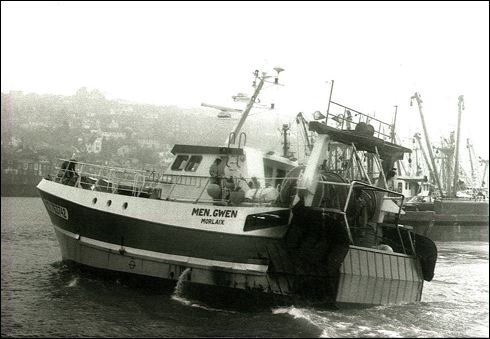An Excellent start to the day...
as the Stelissa sitting low in the water full of fish from a wrecking trip off the south coast of Ireland...
keeping an eye on high water times...
these lucky lemons were jumping out of the sea aboard the Elisabeth Veronique this week
while the Twilight landed some top quality red mullet...
a film crew were on hand to catch the auction action...
with a shot of big hake from the Padstow registered netter Charisma...
and some early season turbot starting to show as they move across the ground...
the one fish buyers can never get enough of...
eyes down as the price rises...
time for a cuppa waiting for the transport to arrive...
two of the big netters that regularly land their fish to French ports...
ex-French trawlers at rest in the harbour - most of the netters and trawlers in the port originate from across the channel...
one of the inhshore boats, Silvery Sea at rest...
celebrating its continued existence in Penzance...
the Ritz is the biggest art deco building in town...








































